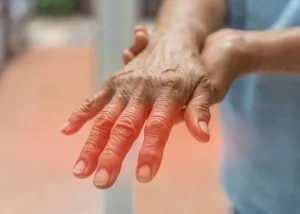What you should know about halfway houses

Those who live in halfway houses are expected to comply with the rules and expectations of the house. Those who live in sober homes are typically free to leave at any time. However, leaving the halfway house without permission, during curfew hours, or otherwise violating the rules of leaving the home can lead to consequences such as eviction from the program. https://ecosoberhouse.com/article/alcohol-and-aging-does-alcohol-make-you-look-older/ Whether or not a sober living facility needs to be licensed depends on the specific locale. In some states, halfway houses are required to be licensed by the Department of Health or the Department of Human Services. Some halfway house rules will be relatively universal, such as requiring clean breathalyzers and drug tests to remain living there.
Everything You Need To Know About Sober Living
The duration of the stay is typically determined by the individual’s progress and stability in their recovery and how easily they will be able to reintegrate back into their everyday lives.What Kind of Rules do Halfway Houses Have? Halfway houses typically require their residents to comply with certain rules and regulations. These rules may include curfews, routine drug and alcohol testing and searches, playing an active and productive role in the house, and restrictions on visitors or guests. Some halfway houses require residents to pass a drug screening and/or breathalyzer test, as they’re not equipped to deal with withdrawal symptoms or delirium tremens.

Frequently Asked Questions About Halfway Houses
Halfway houses, often known as sober living homes, bridge the gap between treatment and independent living by providing critical support in a drug- and alcohol-free environment. Most halfway houses accommodate residents until they have attained at least six to 12 months of sobriety, and sometimes longer. Sober living homes provide support from peers committed to sobriety and working to rebuild their lives. The atmosphere in a halfway house is generally positive, and residents have ample opportunities for having fun and making new friends that may last a lifetime.

Benefits of Halfway Houses for Addiction Treatment
- Sober living houses will generally do check-ins with fellow residents who have assumed accountability roles, whereas halfway houses do check-ins with paid staff members who live off-campus.
- In our appendix table, we attempt to break down which of those 527 facilities fall under our “halfway houses in the criminal justice system” definition, and which facilities primarily serve other purposes.
- Residents usually have to maintain regular employment or show proof that they’re searchingfor employment.
- It can be hard for some to find new friends or social circles that respect their new lifestyle.
It allows you to live in a safe, substance-free environment while readjusting to life outside treatment. Addiction is a complex, chronic disease that impacts Americans in several very profound ways. Experts estimate that more than 2 million people participate in some form of drug and alcohol treatment every year. Although people progress through treatment at different rates, countless studies have indicated that recovery depends largely on treatment length. NIDA (The National Institute for Drug Abuse) says that treatment lasting less than 90 days is limited effectiveness.

From states like Minnesota, we are able to see that the carceral conditions in federal RRCs are often mirrored in the state system. For the most part, people go to halfway houses because it is a mandatory condition of their release from prison. Some people may also go to halfway houses without it being required, simply because the facility provides housing. Placement in Residential Reentry Centers (RRCs) post-incarceration can technically be declined by people slated for release, but doing so would require staying in prison instead. For former inmates, halfway houses help them adjust to life outside prison.

What’s the Difference Between Clean and Sober
The saying “you can’t heal in the same environment that made you sick,” is poignant, especially for those who have checked into drug rehab. There are a million different opinions online, but when it comes to your life, health and wellness only peer reviewed reputable data matters. At Recovery Unplugged, all information published on our website has been rigorously medically reviewed by a doctorate level medical professional, what is a halfway house and cross checked to ensure medical accuracy. The shift to a more punitive punishment philosophy from the 1980s through the end of the 20th century was manifested in determinate and mandatory minimum sentences. Enter your phone number below to receive a free and confidential call from a treatment provider. Insurance coverage and other financial support are sometimes available to help with the cost.
But historically, very little data about halfway houses has been available to the public, even though they are a major feature of the carceral system. Even basic statistics, such as the number of halfway houses in the country or the number of people living in them, are difficult to impossible to find. As a result, house rules can vary greatly from one facility to the next. You may also wish to look up the facility on accreditation agency websites. The Better Business Bureau, the Commission on Accreditation of Rehabilitation Facilities, and the National Alliance on Recovery Residences all offer information on sober living facilities.
Differences Between Halfway Houses And Sober Living Homes
The services and resources a halfway house provides depend on the type of operator, the purpose of the residence and thetypes of residents who live there. In general, halfway houses have strict rules, accountability tests and resources toaid residents. Most houses have some form of house manager, supervisor or on-site landlord. Many people transition into sober living after finishing a residential program to continue their recovery journey in an outpatient setting. Halfway homes and sober houses have high retention rates, and the individuals who commit to 90 days or more are much more likely to remain sober both at the halfway house and for months afterward. Living in a halfway house can be a great bridge between finishing your rehab program and returning to your regular life.
For example, if you are convicted in March and jailed for more than 30 days, you will not be eligible for your March benefit. We can reinstate your benefits starting with the month you are released. To restart your payments, visit your local Social Security office with proof of your release.

